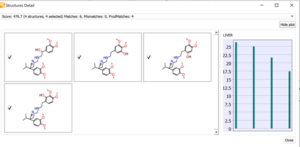Metabolite Identification for Human Liver Microsome Incubation of Verapamil and Data Dependent scan acquisition using Thermo FT Orbitrap
The aim of this tutorial is to perform the first MassMetaSite computation using Verapamil as the compound and Thermo Orbitrap FT raw data files.
Double click on the MassMetaSite Icon in the Desktop.
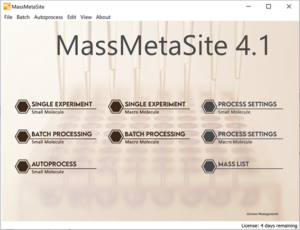
Check the configuration: go to Process Settings/Small Molecule
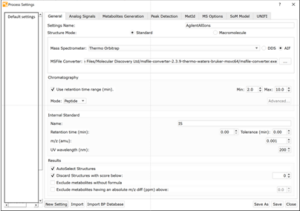
Click on New Settings and write a new name: Thermo-Tutorial-01
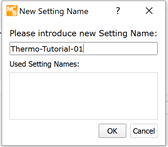
Check that the settings panels are exactly as the one shown in here:
- General tab:
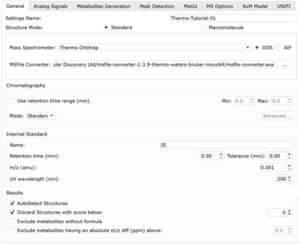
- Analog Signals:
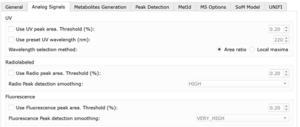
- Metabolite Generation: Click on the Microsomes to select only the biotransformation that will occur in microsomes.
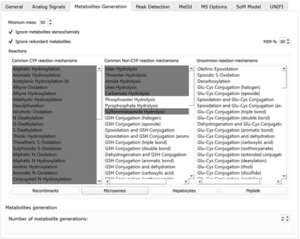
- Peak detection:
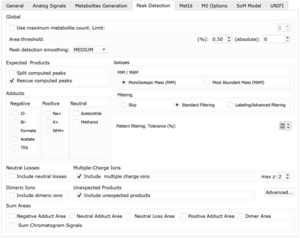
- Met ID:

- MS Options:
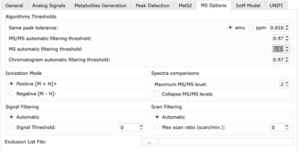
- SoM Model:
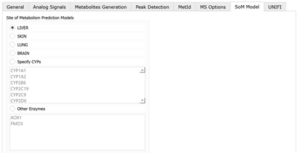
- UNIFI: This tab we do not need to set at this point
Click Save button and Close the Setting page.
![]()
Click the Single Experiment (small Molecule option in the main window)
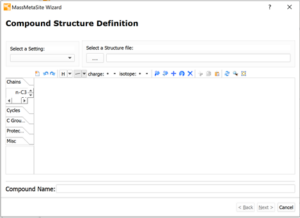
Select the Thermo_Tutorial-01 from the Select Setting box. And click in the … button to browse the system to open the verapamil.sdf molecule.
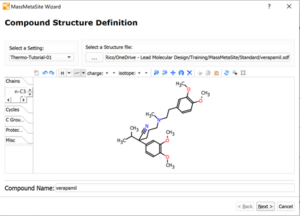
Click Next to continue, a window will a progress bar will be shown, click OK if it does not close automatically to continue.
Click on the … button to select the blank file (Verapamil-HLM-Blank.RAW), the Substrate file (Verapamil-HLM-Substrate.RAW) and the Sample file Verapamil-HLM-Incubation.RAW)
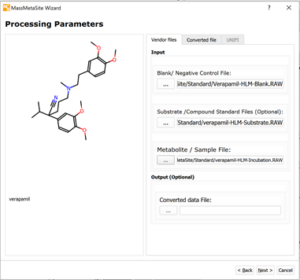
Click Next> to continue, a window will a progress bar will be shown, click Cancel if it does not close automatically to continue.
The window with the detected parent will be show. You can inspect the parameters on the tale in the right and the MS and MS2 from the spectra on the bottom left, on top you can see the structure and the chromatogram for the Substrate file analysis.
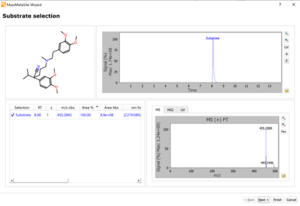
Click Next> to continue, a window will a progress bar will be shown, click Cancel if it does not close automatically to continue.
A new window will be shown with the chromatographic peaks found in the sample file that are related to the Substrate. There are 3 panels:
- In the top one it shows the chromatograms, each color represents a different status of the peak:
- Green: first generation of metabolite
- Brown: 2nd or 3rd generation of metabolism
- Red: Unknown
- Pink: detected only n UV and not in MS
- Orange: detected in fluorescence or Radio chromatogram but no in MS
2. Table in the left part: for each peak it shows data related to the peak.
3. Spectra on the bottom right.
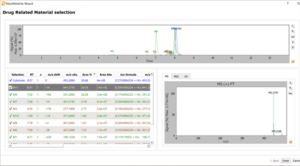
Click Finish to get to the result window, a window will a progress bar will be shown, click Cancel if it does not close automatically to continue.
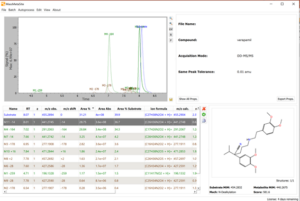
Select the M11-14 metabolite from the table, the panel on the bottom right will show the structure of the metabolite.
Right click on the structure and select Show Fragmentation Detail a new window will be shown with the parent information on the top and the metabolite information in the bottom.
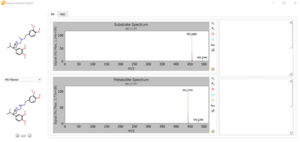
Click on the MS2 and select any m/z that is red colored. It will show the fragmentations assignment on the right and the relationship between the fragment on the parent and the fragment of the metabolite. For example, in the next figure the m/z=303.2059 for the parent was selected and the fragment in the parent and the shifted fragment in the metabolites will be shown.
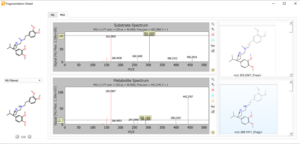
Click on the X on the top right to close the window.
Select the M8+2 metabolite from the table, the panel on the bottom right will show the structure of the Markush representation of the potential metabolite solutions. The red cercles in the atom indicate the place where the hydroxyl group could be located.
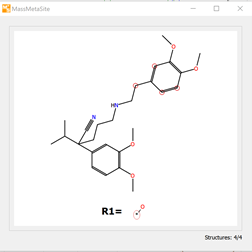
Right click on the structure and select Show Structures detail. The 4 chemical solutions that are represented in the Markush will be shown sorted from left to right and from to bottom in agreement with the MetaSite Site of Metabolism prediction that is represented in the bar plot next to the structures. The user can un-check a solution. Other solutions also visualize by selected then from the combo box on the top that indicates the number of m/z that are matching, mismatching or are fragments that only found in the metabolite.
